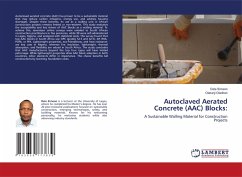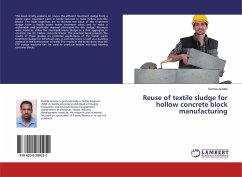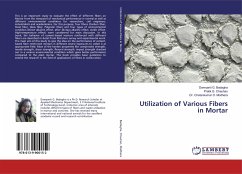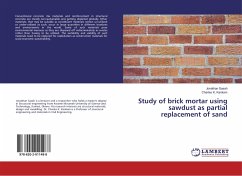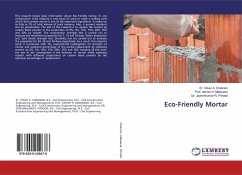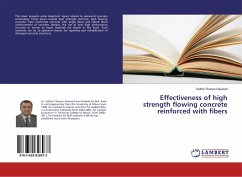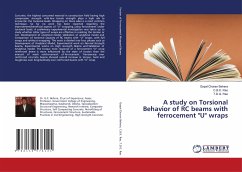
A Study on AAC Block with Textile Reinforced Green Masonry Mortar
Versandkostenfrei!
Versandfertig in 6-10 Tagen
36,99 €
inkl. MwSt.

PAYBACK Punkte
18 °P sammeln!
In general, masonry structures are considered to be optimal for low-rise structures in many countries due to easy and fast construction, abundant material, and no special technique for construction. Also masonry structures are strong enough to resist large compressive stress. These structures have poor ductility and thus are vulnerable under dynamic loading such as earthquake. Unreinforced masonry (URM) structures represent a significant portion of existing historical structures around the world. Recent earthquakes have shown the need for seismic retrofitting for URM structures. Various types ...
In general, masonry structures are considered to be optimal for low-rise structures in many countries due to easy and fast construction, abundant material, and no special technique for construction. Also masonry structures are strong enough to resist large compressive stress. These structures have poor ductility and thus are vulnerable under dynamic loading such as earthquake. Unreinforced masonry (URM) structures represent a significant portion of existing historical structures around the world. Recent earthquakes have shown the need for seismic retrofitting for URM structures. Various types of strengthening methods have been used for URM structures. Three strengthening techniques such as ferro-cement jacketing, textile reinforcement mortar and fiber reinforced polymer sheet. Since textile reinforcement mortar effectively enhance the shear strength of URM walls with negligible change to cross-sectional area and weight of the walls. It increases the shear capacity of bricks and bonding strength between two adjacent bricks. In this research polypropylene fiber mat are used as textile reinforcement mortar. It is laid in-between two layers mortar of two adjacent bricks.



